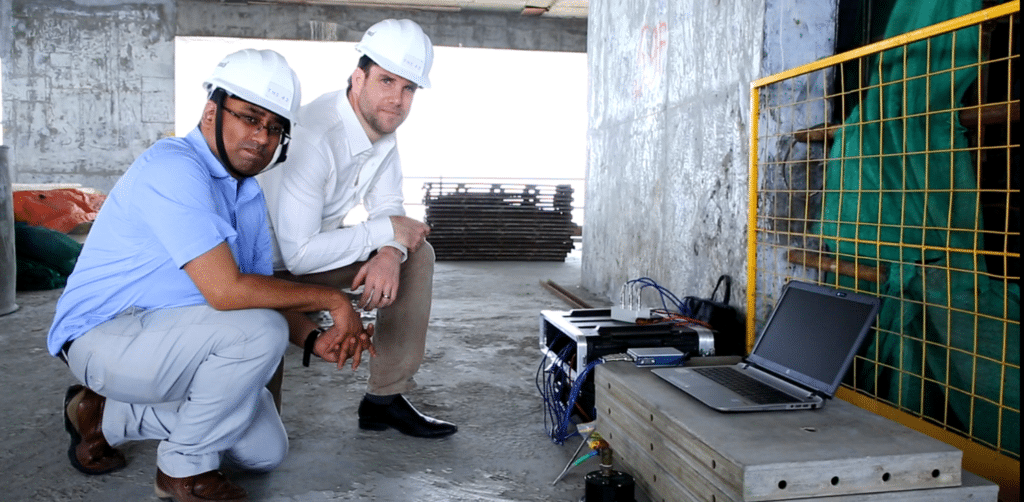Advancing Building Comfort and Safety: Cost-Effective Motion Dampers for Tall Structures
Posted on October 30, 2023
Introduction:
In today’s dynamic urban landscape, the demand for tall buildings is on the rise, driven by factors such as population growth and the need for sustainable urban development. As cities across the world reach for the sky, engineers and architects are faced with the challenge of not only designing structures that meet stringent safety standards but also ensuring that occupants experience a comfortable environment.
One crucial aspect that comes into play in the design of tall buildings is the consideration of wind-induced motion. In recent times, fire hydrant tanks have emerged as an important part of performance-based fire design, particularly for buildings exceeding 135 meters in height – according to the Australian building Code (NCC 2022) buildings above this height are not amenable to the deemed to satisfy provisions in AS 2118 due to higher system pressure requirements.
Potential Dual Role of Fire Hydrant Tanks:
Beyond their primary function in fire safety, fire hydrant tanks have revealed an unexpected yet highly valuable secondary role in enhancing building comfort. Tall structures, while marvels of modern engineering, can be susceptible to wind-induced motion. Just as individuals have varying thresholds for experiencing motion sickness on a ferry, the sensitivity to building motion varies widely. While established criteria exist for acceptable building acceleration levels, it’s important to acknowledge that there will always be occupants who may feel uncomfortable, even within these prescribed limits. Adapting the same fire hydrant tanks to also serve as tuned liquid motion dampers (TLDs) is a very cost-effective way of accommodating these more sensitive occupants even where the building accelerations happen to meet the prescribed criteria.
Tuned Liquid Dampers: A Cost-Effective Innovation:
Conventional methods of stiffening a building, while effective in some cases, can be costly and may inadvertently exacerbate sensitivity to motion. Increasing structural rigidity can bring the natural frequency closer to the peak of the human body’s response spectrum, potentially heightening sensitivity to motion. This is where TLDs emerge as a cost-effective solution.
Unlike traditional approaches, tuned liquid dampers operate by reducing building motion without the need for increased structural stiffness. This innovative technique not only proves highly effective but is also remarkably cost-effective, especially when integrated with an existing fire hydrant tank.
Customization and Optimization:
The engineers at Windtech Consultants have honed the art of tailoring fire hydrant tanks to harmonize seamlessly with a building’s natural frequency. This optimization enhances their efficiency as tuned liquid dampers. Moreover, Windtech has developed ingenious energy dissipation techniques within these tanks, incurring minimal additional costs.
Practical Considerations: Reinforced Concrete Tanks:
From a logistical perspective, clients often lean towards reinforced concrete tanks. This choice not only sidesteps extended lead times but also avoids the associated expenses of alternative fabrication methods. Windtech’s expertise in streamlining damper designs during peer reviews has yielded substantial cost savings.
The engineers at Windtech have been able to develop the most cost-effective forms of energy dissipation devices within these tanks at negligible cost. From a logistic standpoint our clients tend to opt for a reinforced concrete tank to avoid the long lead times and costs associated with other fabrication methods such as metal plates or GRC panels.
Real-World Savings: Case Studies:
Whenever we are asked to peer review a damper design, we tend to be able to simplify the design to achieve significant cost saving. This especially happens when we are dealing with a regular tall building where a Tuned Mass Damper or some proprietary system is proposed – in these cases many millions of dollars can be saved. Even for a a recent case where a TLD damper was already proposed, we were able to significantly simplify the design of the TLD damper to achieve a staggering USD$300,000 in savings. In another instance, the additional cost of converting a fire hydrant tank into a tuned liquid damper amounted to as little as USD$50,000. At that price, it would make sense to include such a measure even if the building acceleration is just inside the target criterion, given the broad range of sensitivity of humans to building motion.
Figure 1. Measuring Dynamic Properties of The42, Kolkata, Dattatreya Das (Left), Aaron Lefcovitch (Right)
Conclusion: Pioneering a New Era in Building Design
As cities continue their upward trajectory, the integration of fire hydrant tanks as tuned liquid dampers represents a significant advancement in tall building design. By addressing both fire safety and building comfort in a synergistic manner, engineers and architects are ushering in a new era of innovative and cost-effective solutions.
In this rapidly evolving field, Windtech Consultants stands at the forefront, offering tailored expertise to ensure that tall structures not only reach for the sky but also provide a safe and comfortable environment for their occupants.
If you are working on any projects that could benefit from the capabilities presented in this article, please reach out to our regional offices Sydney & Melbourne, Australia, London, UK, and Mumbai, India. New York & Miami, USA, Toronto, Canada, Dubai, Hong Kong & Singapore, we guarantee to support you wherever you are based.
To get regular updates on news and events, please follow us on our LinkedIn page.
Return to Main News Page


